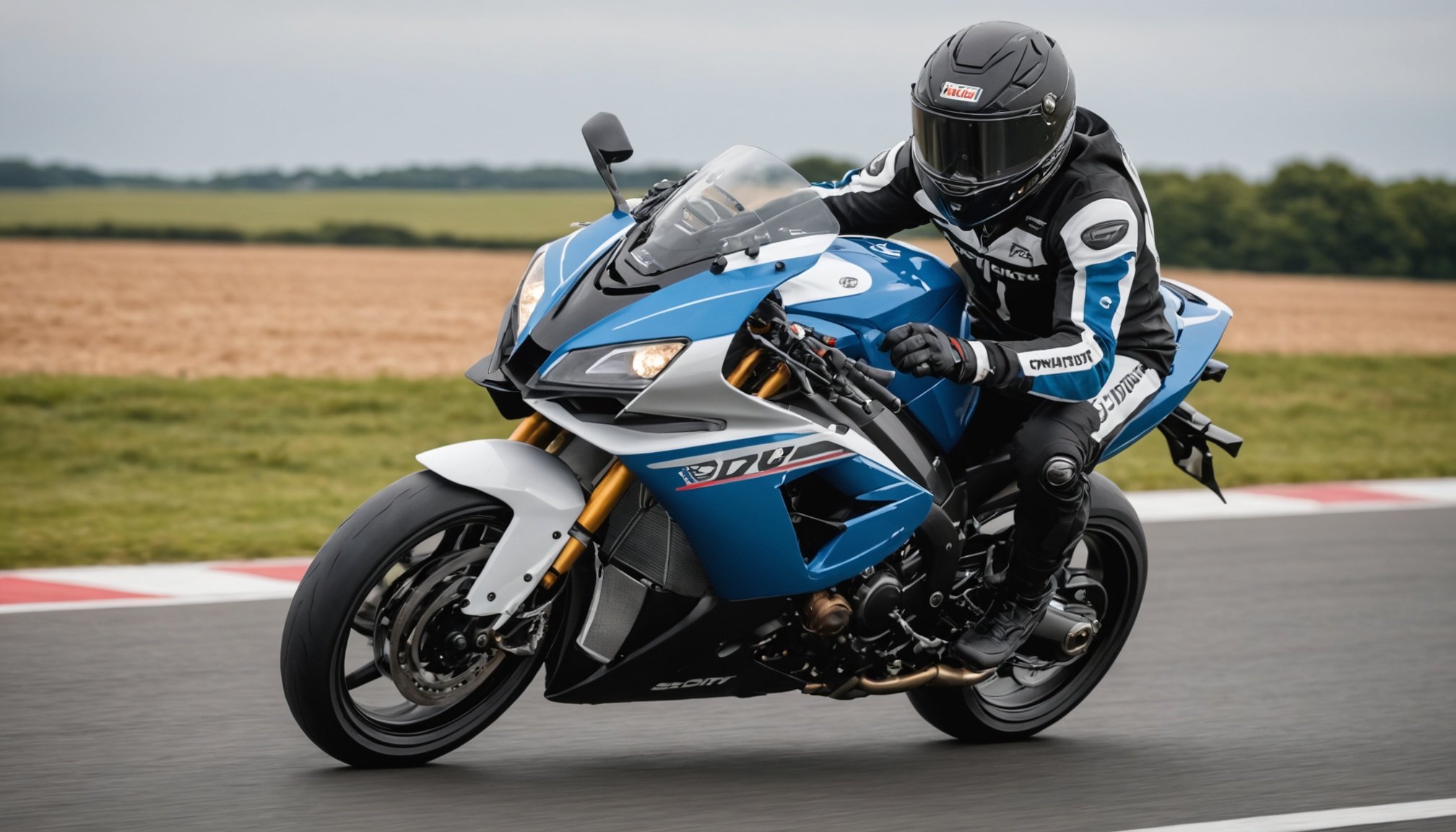Overview of 2023 UK Sport Bike Helmet Safety Standards
In 2023, the UK Sport Bike Helmet Standards were updated to enhance rider safety and protect against the increasing risks faced by cyclists. These new regulations are crucial as they introduce stringent criteria that helmets must meet to be deemed safe for use. The standards focus on various aspects such as impact resistance, strap durability, and ventilation efficiency, ensuring that riders are equipped with reliable protective gear.
One of the main regulatory bodies involved in setting these helmet safety standards is the British Standards Institution (BSI). They collaborate with other organisations, including the Department for Transport (DfT), to ensure that the regulations are comprehensive and effectively enforced. Their objective is to minimise fatalities and injuries among cyclists by promoting the use of helmets that adhere to the highest safety benchmarks.
Also to see : Comparing Synthetic vs. Mineral Engine Oils: The Best Choice for UK Sport Bikes
The importance of these updated helmet standards cannot be overstressed. For riders, adhering to these regulations means investing in helmets that are not just protective but also align with the latest safety innovations. This move is vital for safeguarding physical well-being while also fostering confidence in cycling as a safe mode of transport. By following these guidelines, cyclists can enjoy their time on the road with reduced risk and enhanced peace of mind.
Key Changes in Safety Features
The world of helmet safety has seen remarkable transformations with the introduction of advanced materials. Innovative construction techniques are at the forefront, significantly boosting impact resistance. These changes ensure helmets can withstand greater forces during a collision, effectively protecting the wearer. The use of cutting-edge materials enhances both the durability and the lightweight nature of the helmets, which is crucial for comfort during long rides.
Have you seen this : Top Waterproofing Solutions for Safeguarding UK Sport Bike Electronics
Alongside improvements in impact resistance, there are notable updates in visibility features. For night riders, these enhancements are particularly valuable. Helmets now come equipped with reflective surfaces and integrated LED lights. These features not only increase a cyclist’s visibility to others but also illuminate the path ahead, fostering safer travel during low-light conditions.
Manufacturers have also been focusing on improving helmet design to accommodate these advanced materials. By doing so, they ensure that these additions do not compromise the helmet’s aesthetic appeal or comfort. Such developments in helmet safety features are testament to the industry’s commitment to providing cyclists with both protection and style.
In summary, the latest shifts in helmet safety encompass advanced construction techniques, superior impact resistance, and improved visibility solutions, all of which are vital for enhancing rider safety on the roads.
Testing Criteria and Compliance Requirements
Understanding helmet testing standards is crucial for ensuring safety. Helmets undergo rigorous testing methodologies to evaluate their effectiveness in protecting users. Tests include impact resistance, penetration resistance, and retention system effectiveness. These tests simulate real-world scenarios to ensure that helmets provide adequate protection during accidents.
The compliance criteria for helmets are stringent. To meet these requirements, helmets must pass all designated tests. This involves checking the helmet’s ability to absorb impact, resist sharp objects, and maintain its integrity during a crash. Helmets also undergo environmental testing to ensure durability against heat, cold, and UV exposure.
The certification process for helmets has evolved over time, ensuring that products meet modern safety standards. Independent third-party organizations typically conduct these tests to provide an unbiased evaluation. Manufacturers must submit helmets for testing and receive certification before their products can be legally sold.
Differences in compliance between new and previous standards include more rigorous criteria and broader testing parameters. For instance, modern standards might require additional testing at differing impact angles and speeds. This ensures helmets are equipped to handle a wider range of accident scenarios, thereby enhancing user safety. Understanding these evolved standards helps consumers make informed decisions about their protective gear.
Comparing 2023 Standards to Previous Years
Navigating the evolution of helmet standards can be revealing. From historical policies to today’s innovations, understanding safety improvements through the years is crucial for riders. The journey began with basic safety protocols but has evolved significantly, with each revision reflecting growing technological advancements.
In 2020, standards emphasized impact resistance and basic structural integrity. Fast forward to 2023, the essentials remain, yet notable enhancements include better aerodynamic features and increased ventilation systems. Helmets are now designed with multi-directional impact protection systems, vastly improving upon earlier designs.
The timeline showcases a trajectory of increased safety features and material enhancement. 2023 standards follow a rigorous blend of innovation and expertise, stringently tested to mitigate a greater number of head-related injuries. This marks a stark contrast to earlier editions where primary focus was structural durability.
Modern helmets incorporate smart technologies, enhancing rider safety through real-time data collection capabilities and integrated communication interfaces. Historical standards laid the groundwork, addressing fundamental requirements. Still, the leap from 2020 to 2023 demonstrates a paradigm shift, emphasizing proactive prevention over mere compliance.
For past standards, the impact on rider safety was significant yet, by today’s measure, limited. As we trace advancements, it’s imperative to recognize the concerted effort within the industry to prioritize rider safety, upholding the mantra of continuous enhancement.
Practical Guidance for Choosing Compliant Helmets
When navigating the buying guide for helmets, riders often face a myriad of choices that can feel overwhelming. Begin by focusing on rider protection, prioritising helmets that have obtained necessary certifications such as DOT, ECE, or Snell. These certifications ensure the helmets meet safety standards, which could be instrumental in protecting riders during accidents.
Evaluate the helmet’s fit and comfort, as these directly influence its effectiveness. A secure fit should snugly cradle your head without inducing pressure points. Consider materials like a high-quality polycarbonate shell or impact-absorbing EPS foam liners for enhanced durability and protection.
Identifying reputable helmet brands that consistently meet or exceed 2023 standards can simplify the decision-making process. Brands such as Shoei, Arai, and Bell have established trust by producing helmets that blend innovation with safety compliance.
In essence, when selecting compliant helmets, prioritise those that merge comfort with certified protection. Keeping informed about current standards empowers riders to make choices that align with their safety needs. Always remember, in the long run, investing in a quality helmet pays dividends in safeguarding yourself on the road.
Additional Resources and Statistics
Understanding the importance of helmet safety is essential for every rider. Statistics reveal compelling insights into how effective helmets are in preventing injuries. For instance, studies show that helmets can reduce the risk of head injuries by up to 69%. This significant percentage highlights the crucial role that helmet safety plays in accident prevention.
When it comes to safety resources and standards, various organisations provide comprehensive guidelines. These include the Department for Transport’s documents on helmet specifications, which detail everything from materials used to testing protocols. Such resources ensure that helmets meet the required safety criteria, providing peace of mind for users.
Staying informed about ongoing changes in safety regulations is paramount. As technology evolves and our understanding of safety improves, official guidelines are frequently updated. This underlines the necessity for riders to regularly check official resources to ensure their gear complies with the latest safety standards.
In summary, being proactive in understanding and applying helmet safety statistics, and accessing trusted safety resources, equips riders with the knowledge to make informed decisions. Not only does this safeguard their well-being, but it also aligns with their responsibility to adhere to current official guidelines.











